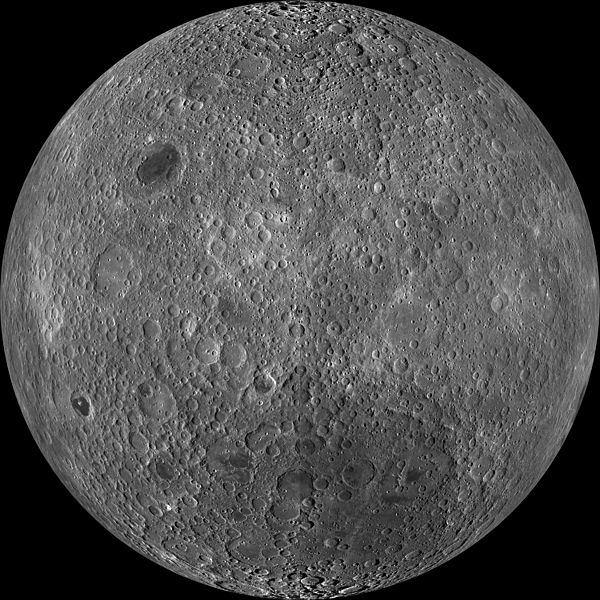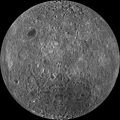Файл:Moon Farside LRO.jpg
Выгляд

Памер прагляду: 600 × 600 піксэлаў. Іншыя разрозьненьні: 240 × 240 піксэлаў | 480 × 480 піксэлаў | 768 × 768 піксэлаў | 1024 × 1024 піксэлаў | 2048 × 2048 піксэлаў | 18 000 × 18 000 піксэлаў.
Арыгінальны файл (18 000 × 18 000 піксэляў, памер файла: 85,34 Мб, тып MIME: image/jpeg)
Гісторыя файла
Націсьніце на дату/час, каб паглядзець, як тады выглядаў файл.
| Дата і час | Мініятура | Памеры | Удзельнік | Камэнтар | |
|---|---|---|---|---|---|
| цяперашняя | 02:47, 20 сакавіка 2014 |  | 18 000 × 18 000 (85,34 Мб) | Huntster | High resolution mosaic. |
| 07:12, 9 красавіка 2011 |  | 1600 × 1600 (1,44 Мб) | Bubba73 | {{Information |Description ={{en|1=Far side of the Moon, by NASA's Lunar Recon. Orbiter}} |Source =http://apod.nasa.gov/apod/image/1104/farside_lro1600.jpg |Author =NASA - LRO |Date =2011? |Permission = |other_versions = } |
Выкарыстаньне файла
Ніводная старонка не выкарыстоўвае гэты файл.
Глябальнае выкарыстаньне файла
Гэты файл выкарыстоўваецца ў наступных вікі:
- Выкарыстаньне ў af.wikipedia.org
- Выкарыстаньне ў az.wikipedia.org
- Выкарыстаньне ў be.wikipedia.org
- Выкарыстаньне ў bjn.wikipedia.org
- Выкарыстаньне ў bn.wikipedia.org
- Выкарыстаньне ў bs.wikipedia.org
- Выкарыстаньне ў ca.wikipedia.org
- Выкарыстаньне ў cs.wikipedia.org
- Выкарыстаньне ў de.wikipedia.org
- Выкарыстаньне ў en.wikipedia.org
- Выкарыстаньне ў en.wikibooks.org
- Выкарыстаньне ў en.wikiversity.org
- Solar System, technical/Moon
- User:Marshallsumter/Radiation astronomy2/Visuals
- Draft:Original research/Planets
- User:Marshallsumter/Radiation astronomy2/Visuals/Quiz
- User:Marshallsumter/Rocks/Rocky objects/Astronomy
- User:Marshallsumter/Radiation astronomy/Courses/Principles/Hourly 2
- User:Marshallsumter/Radiation astronomy/Courses/Principles/Midterm quiz
- User:Marshallsumter/Radiation astronomy/Courses/Principles/Final quiz
- Titan/Quiz
- User:Marshallsumter/Rocks/Rocky objects
- Draft:Enceladus/Quiz
- Moon/Quiz
- Stars/Sun/Heliology/Quiz
- Earth/Quiz
- Stars/Reds/Quiz
- Draft:Dione/Quiz
- User:Marshallsumter/Radiation astronomy2/Scattered disks/Quiz
- User:Marshallsumter/Radiation astronomy1/Kuiper belts/Quiz
- Liquids/Liquid objects/Moon
- User:Marshallsumter/Radiation astronomy/Craters
- Выкарыстаньне ў es.wikipedia.org
Паказаць глябальнае выкарыстаньне гэтага файла.


